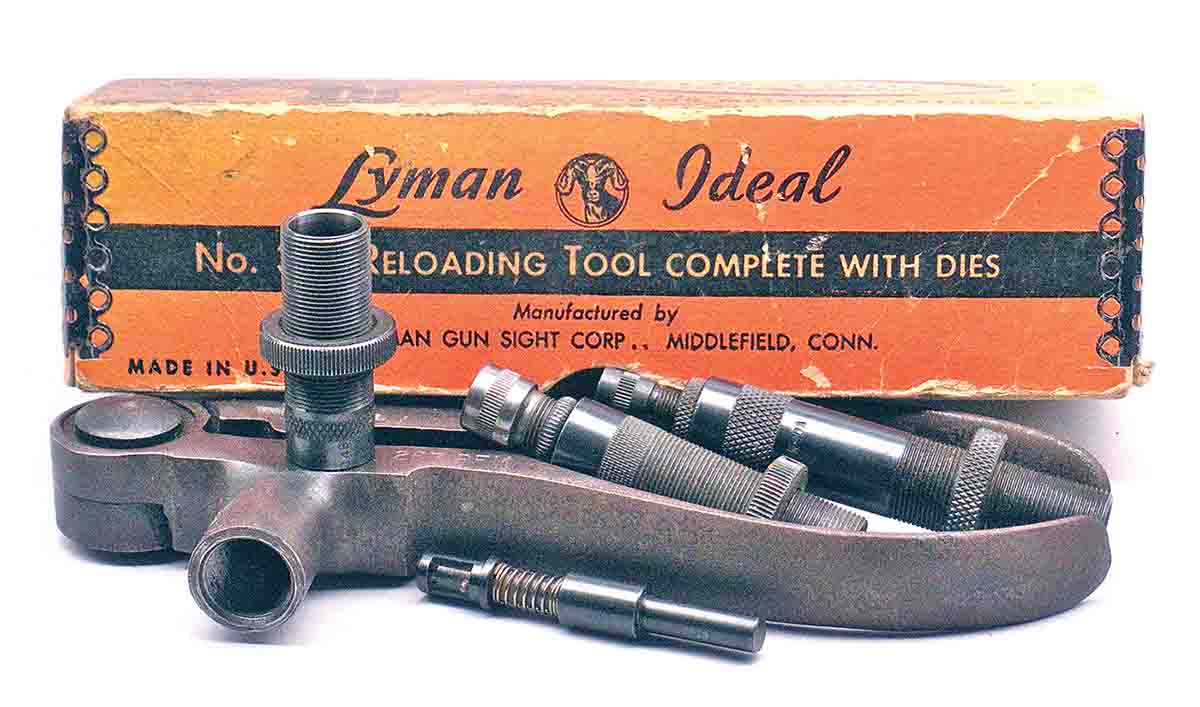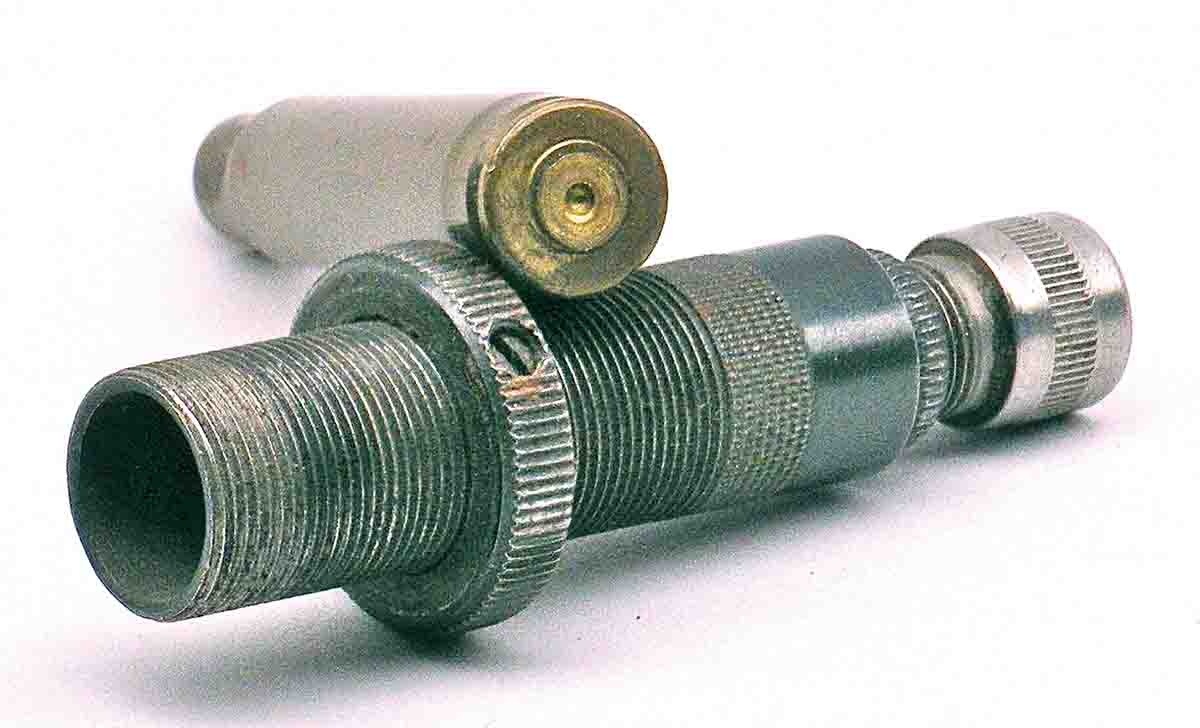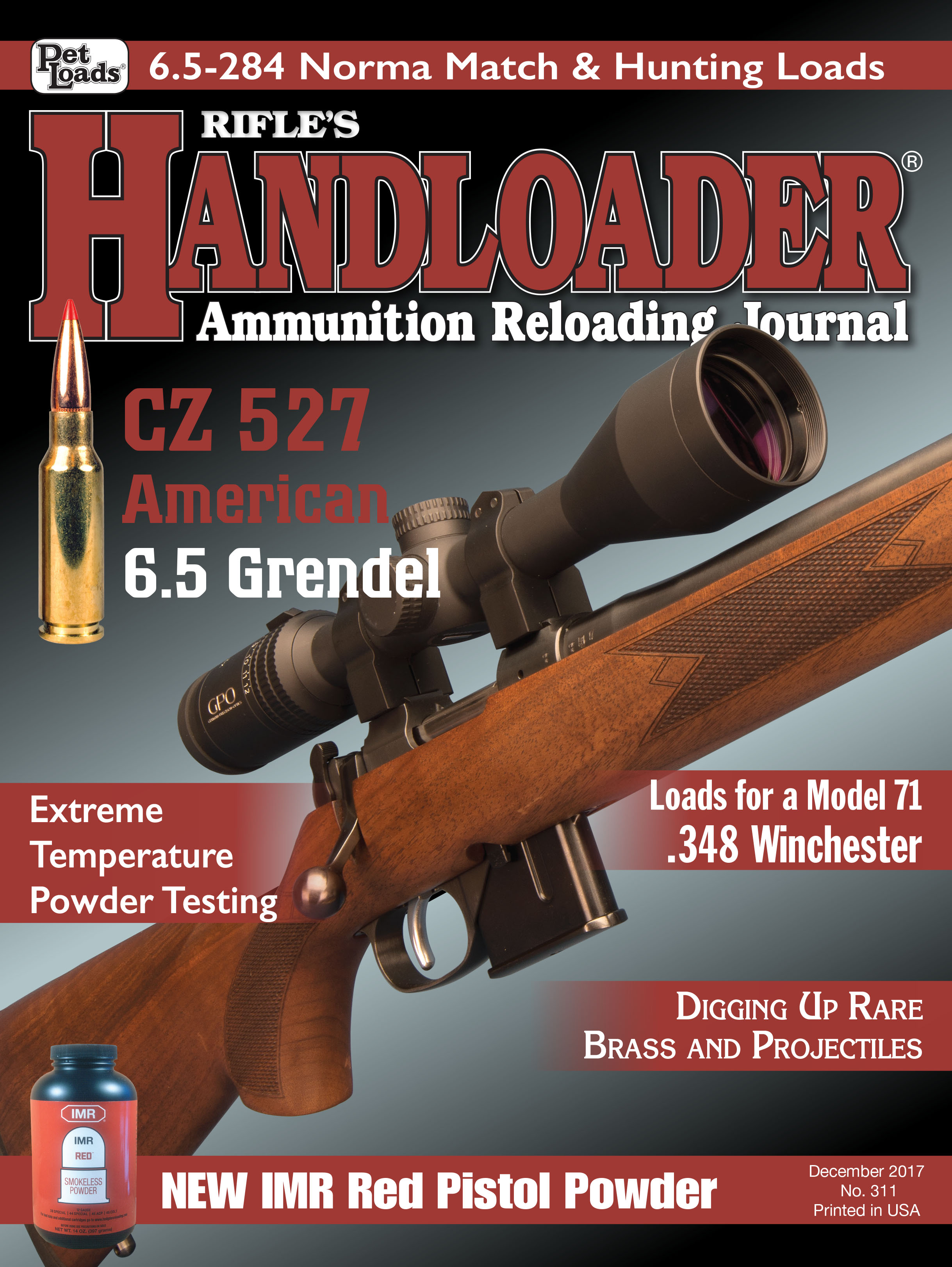Reloader's Press
Handloading, Old School
column By: Dave Scovill | December, 17

The only advice anyone offered about how to shoot came from Lester one day while we were in a field plinking soup cans with his .22 rifle. There were no rests, so he said, “You can’t hold the rifle perfectly still, so get the sights lined up, swing them toward the target and begin to squeeze the trigger so it fires when the sights are on the target.” He summed it up as “pass shooting,” like shooting pheasants or pigeons, only the target wasn’t moving while the rifle comes to it. I still follow that advice, preferring to bring the sights, scope or open sights up from below the target to 6 o’clock when the rifles fires.
These memories returned after two of the rifles I loaded for at home in the 1950s and early 1960s, the 7.7 Arisaka and a .30-40 Krag carbine, resurfaced in my stepfather’s estate nearly 50 years after I last saw or used them. Two years prior to his passing, Lester handed me a fired cartridge case when we attended his 90th birthday shindig. It was a 7.7 for sure, but when asked where it came from, he said he picked it up after I shot my first deer with it in 1955. I should have guessed; the crimped military primer was poking out of the pocket at least .005 inch, owing the low pressure load used with the subgroove .308-inch diameter bullet that failed to fireform the case properly.
I had pretty much forgotten that hunt, except for the fact that a midsized blacktail buck walked up behind my stand in the thickly timbered forest unseen, within 40 or 50 feet. When I turned around, there it was, whereupon the rifle came up and I fired.
In those days, it wasn’t considered manly or respectful to bounce around like a high school cheerleader when you shot a prized animal, but I do remember having a serious case of the shakes after the rifle fired. Somehow I managed to regain my composure before Lester showed up, smiled, slapped me on the back and started dragging the deer off the mountain.
Mostly because I enjoyed the personal hands-on work with the Lyman 310, I borrowed the 7.7 and .30-40 reloading dies from Lester several years ago with the idea of adding another die set or two. Also in the box were dies for Mom’s .257 Roberts, a rifle I borrowed from her back in the early 1970s to hunt deer and coyotes using loads put together in those 310 dies.
By that time, a Lyman Spartan press was used to load for a Savage Model 110 .243 Winchester and a few other rifles. Using RCBS and Lyman dies in the Lyman press, the process of handloading seemed almost too clinical when compared to the 310 “nutcracker” tool that required a certain amount of hands-on manpower. Of course, the Lyman 310 sizing die was not designed to size a fired case full length, fully lubricated or not. So at some point, a full-length sizing die was required, into which the lubricated case was driven with a rubber or leather mallet. A wooden block to spare the case head from blows with a carpenter’s hammer was also used.
Since I did not enjoy hammering a case into a full-length die, it was prudent to stick with suggested starting loads listed in the Ideal book: 32.5 grains of IMR-4320 with 100-grain jacketed bullets and not much more with 75- to 85-grain varmint loads.
Repeatedly fired cases would, sooner or later, fail to chamber properly, especially in a pump-action Model 760 .257 Roberts. Either way, the Roberts shot well enough with Sierra 75-grain hollowpoints to hit prairie dogs and an occasional badger or coyote for as far out as prudent judgment allowed, maybe 250 yards or so, with the 4x scope secured in Weaver rings and tip-off mount. During the few years that I used the .257 Roberts, it was never, ever fired for groups, which was considered a bit wasteful of ammunition, but it was occasionally test-fired at a rock or other convenient aiming point to verify the scope setting and determine where the bullets landed at whatever range, for subsequent field reference.
No doubt, accuracy-minded folks reading this now, some 50 to 60 years after the fact, are likely skeptical about how folks during the years following World War II managed to fill their deer tags. The answer comes two ways, I suppose. First, we weren’t concerned about minute-of-whatever. Secondly, we were hunting deer with a heart/lung area of at least 12 inches in diameter in country where it was rare to see 200 yards, let alone get a shot at that range.
In modern terms, “minute-of- gallon jug” was sufficient, although it was obvious to me at least, that any of the rifles in our home shooting loads put up in the Lyman 310 dies could do that if I was up to it. At the age of 13, the scoped Roberts did that easily out to maybe 200 yards, the longest shot I ever took at a running blacktail buck on the French Creek Ranch. I led with the first shot, hitting the neck, and it went down. The buck struggled to its feet and started to run again. The second shot through the lungs finished the job. Both shots were fired from a standing position in a hayfield.
While modern-day hunters might condemn those old Lyman 310 dies for producing anything close to what they expect, and often demand, in terms of accuracy, years ago those old dies made it possible to shoot – a lot – mostly because we lived for most of my preteen and teen years in the boondocks, where I could walk out the back door 50 yards or so and shoot, or walk another 200 yards and be hunting for deer, bear or small game.
In those days prior to being old enough to hunt legally, a young man or woman was still expected to learn to shoot, and I took it seriously, probably to excess, to help put meat on the table as a responsibility to the family. Apparently, the local school board agreed by shutting classes down for the first week of deer season.
My stepfather finally got so tired of me shooting up all the Speer bullets that he bought a box of cast bullets and asked me to lay off the expensive jacketed stuff, and the Nosler Partition 117-grain .257 bullets were strictly off-limits except for hunting. As a result of hoarding the Noslers, 12 remain in the original box purchased in 1956.

Lyman 310 .45 Colt dies are used to produce excellent ammunition with properly sized .454+ inch cast bullets.
In retrospect, I can only assume that most folks thought any sporting rifle, even the 7.7 Arisaka, was capable of shooting well enough to get the bullet into the right spot on a deer; the rest was up to whoever pulled the trigger. If you missed or placed the bullet poorly, I don’t recall anyone suggesting the rifle was at fault. It was always “you” missed.
In this day and age, where some folks appear to be under the false impression that they can buy accuracy, it seems to be the other way around.


